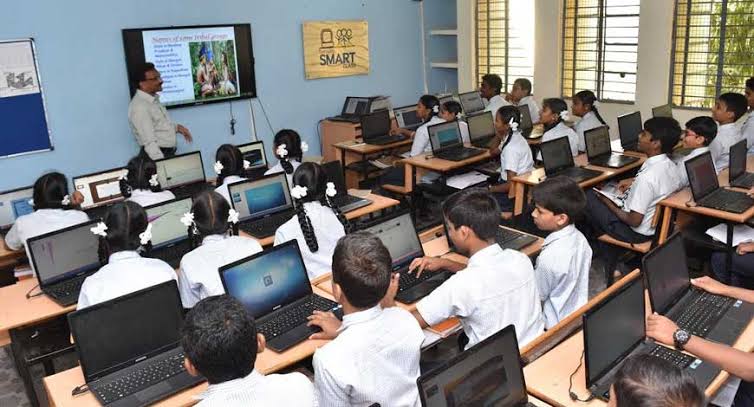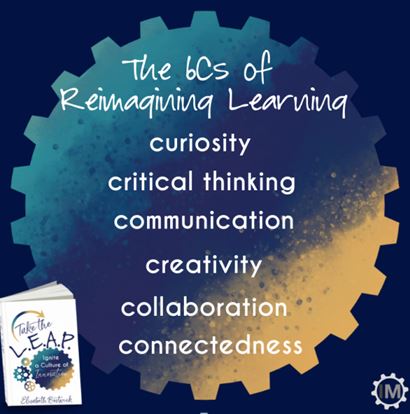Prof Ujjwal K Chowdhury

What is an innovation?
Like in most cases of oft-repeated concepts and jargons, this one also has various definitions. Some would consider new methods for alliance creation as innovation, newer ways of collaboration. Some would call it as “A new idea, creative thoughts, new imaginations in form of device or method”. Some would define innovation as application of better solutions that meet new requirements, unarticulated needs, or existing market needs. Introducing or implementing new ideas or methods would often be called an innovation; or the process that involves multiple activities to uncover new ways to do things.
What sort of innovation do we see in schools? Or which there can be in schools?
Innovations in School can be tech-driven, using new technologies, whether smart classrooms, or IT enabled services, new applications and social media, or technology to teach, assess or document, etc. Some innovations can be best practices driven, whether it is of peer or shared learning, or taking learners beyond classrooms in myriad ways, etc. Some can be emotion driven, which looks at counselling, motivational inputs, inspiration, role modelling, all enhancing emotional quotient of the learner. Some obviously are STEM driven, appealing to the left logical, rational, sequential brain, taking succour from science, technology, mathematics et al. For example, if a school from a junior class to higher secondary section, turns every chapter of sciences and ecology papers into models, charts, prototypes and active experiments, or takes sciences through a mobile mechanism to the society at large, it is resorting to an active STEM innovation. Innovation can be exposure driven, when you expose the learners to the larger world through nature trails, excursions, heritage walks, industry visits, rural outreach, and many more. And, going beyond these, innovations in school can also be next practices driven which may bring in media literacy and empowering learners to identify and bust false content, or legal literacy training in which learners in school are exposed in a structured way to basics of laws that affect a young person, disaster management training focusing on how to combat fire, earthquake, alarm, road accident, eve teasing, and finally financial literacy training in which learners learn basics of use of money, value and tools of saving, spending norms, etc, having their own bank accounts even while in schools.
Which are the usual global innovative experiences in schools world over?
To illustrate better let’s look at some global practices in innovations in schools. Some innovation in US schools today focus on turning every instruction-led learning environments to an experiential learning environments where learners are made to do what they study. Hows and Whys of things are best understood by doing and not by just listening or watching. Curriculum content across schools in the developed world are becoming more organic, and less structured. Even in many places, technology leads to educators buy, sell and share teaching resources. WiseWire and Teachers Pay Teachers in US are digital content selling-buying platforms among teachers which help them collaborate to enrich their content and in the process some with superior content raking some income along the way.
Incorporating big data analytics and content management, educators develop an individualized curriculum that enhances how each student learns (e.g. Playlist of content in WiseWire changing for each student). Many in the West have started the use of the millennials’ language and style: Khan Academy video lessons, YouTube use, distinct style and language for young learners. Twitter, Tumblr, Snapchat, Imessage, Instagram, Facebook & Whatsapp are being creatively integrated with school education. There is a case of a management school in India, where the professor sends a 3 minutes interesting video on the subject he is taking up next through group whatsapp to increase footfall in the class with marked success.
In the US, the smart-phone applications like Socrative and Plickers are helping teachers interact and assess students’ progress, collaborate via cloud-based applications to work and solve a common goal. Teachers can publish real-time quizzes and polls for students via mobile devices to keep them engaged
Various innovative techniques are being utilized by teachers world-over.
(A) Audio-visual Supplements: Graphical representation of complex equations with the help of smart-boards; audio-visual equipment indispensable for language-learning; snippets of award-winning films, plays, and speeches of great orators.
(B) Flip methodology or classroom: Roll the responsibility of learning towards the students and make them active participants in learning. Teachers provide resources via email or intranet, whereas students gather concepts, constructing knowledge, and drawing inferences.
(C) Collective Learning/ Peer Teaching: First teacher teaches, then peers teach in groups with cases: learners more attentive.
(D) Role Play: Great source to instil values and ideals as they play the roles of historical stalwarts like Gandhi, Nehru, Mandela, and Martin Luther King, or legendary characters like Caesar, Mark Anthony, and Charlie Chaplin, etc.
(E) Games: Word & Mind games like Quiz, Puzzles, Scrabble, Sudoku, video games (Anandshala Gupshup by Quest Alliance, Bengaluru, for parents-children interaction), Career Quest game for vocational aptitude. Can’t-Wait-to-Learn shows the potential of gamified tablets.
(F) Beyond Classroom: Nature Trail, Heritage Walk, Educational Excursion, Field trips, Rural Journeys, City Walks, etc.
(G) Beyond Academics: interestingly Happiness Sessions are creating waves in Finland and Delhi state schools alike wherein co-curricular, creative and collaborative efforts apart from indoor and outdoor sports are integrated into a happy school experience.
Where do the mentors come in?
Teachers matter. But teachers need to evolve to mentors, facilitators, motivators, and second parents for the learners (instead of students) in the schools. They are the most important work-force, but less recognized in economy. Mentors often need mentoring and learning themselves with the new economy and its new IT enabled technologies coming in. They need collaborative experience sharing, and reasonable salary and growth curve. They need rewards & formal recognition: within & beyond schools. They need Faculty Development Programs (as being done by the Delhi government for its schools teachers through courses in IIMs, and Visits Abroad). The Adamas University in Kolkata does Shikshak Samman programs in districts of Bengal, inviting, interacting with school teachers, exposing them to new EdTech, learning from them, rewarding and recognizing them, and sharing a meal at the end. What needs to dawn to the education community all the more today is that collaboration among schools is far better and rewarding than the old school competition.

What is the impact of VUCA world on school innovations?
International Commission on Financing Global Education Opportunity’s report, The Learning Generation, highlights an alarming reality: 2 billion—or half—of all current jobs are projected to disappear by 2030 due to automation, robotics and use of artificial intelligence. It is clear that globalization, advances in technology, and changing employment threaten to leave many behind, and this needs a radical reimagining of education from school level.
Center for Universal Education at Brookings, US, reports to transform education by spurring innovation in: (1) skills, (2) teachers, (3) technology, (4) non-state actors (NGOs, corporates), and (5) accreditations in supporting and delivering innovations in education (e.g. like installing and making use of Green Campus, Open Learning, Skills Academies, Coursera).
Skills of tomorrow’s VUCA world (volatile, uncertain, complex & ambiguous) need to be learnt from the schools and a positive outlook needs to be developed by redefining VUCA to vision, understanding, communication and agility. Such skills need creativity, design thinking and innovation because till date AI and automation can work only when humans have created the first template, prototype or design. There is also the need for skills for conflict resolution, problem solving and critical thinking as while AI can generate Big Data, their interpretation and use in solving problems is a human skill or virtue. Also, positive VUCA needs youths to learn from schools, the methods and virtues of teamwork, analytical skills, entrepreneurial attitude, leadership, application orientation, active planning & communication, and surely the digital skills.
The Power of Video Creation
One key innovation in school can be to help learners think visually through pictures, images, graphics, cartoons, etc. Taking this further ahead, integrating video creation & presentation making in the classroom is a necessary innovation today. Using anything iMovie to WeVideo, learners can create video as a learning resource. YouTube (with privacy settings) and SeeSaw or Flipgrid are also alternatives learners can make use of. The benefits of SeeSaw and Flipgrid are that students can add voice recordings or text sharing feedback with peers. Students became the co-creators of content and as a result, more engaged, including their parents. Useful apps like Book Creator, Explain Everything and EduCreations can be utilised towards this end.

Where do we start today in Innovation?
1.Set goals: get clear on the problems that need to be solved and setting clear goals to focus innovation.
- Create flexibility: create flexibility in the system, at both the school and classroom levels, clarifying exiting flexibility, granting more flexibility to broader aims, and creating space to innovate
- Develop talent: build support for professional learning by embedding faculty coaching, creating change management supports, and supporting knowledge sharing.
- Build networks: identify which mentors (within & beyond schools) are positioned to design new models for instruction and which are positioned to adopt and adapt existing innovative practice.
Bon Voyage for a never-ending journey of Innovation on and beyond Campuses
(The author is a regular columnist, television commentator, and Pro Vice Chancellor of Adamas University in Kolkata.).





























